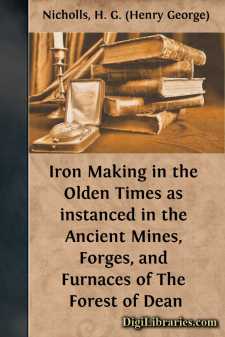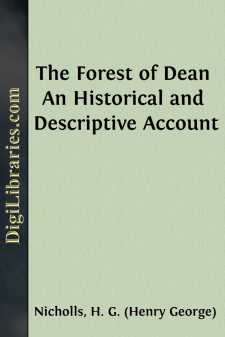Categories
- Antiques & Collectibles 13
- Architecture 36
- Art 48
- Bibles 22
- Biography & Autobiography 813
- Body, Mind & Spirit 142
- Business & Economics 28
- Children's Books 17
- Children's Fiction 14
- Computers 4
- Cooking 94
- Crafts & Hobbies 4
- Drama 346
- Education 46
- Family & Relationships 57
- Fiction 11829
- Games 19
- Gardening 17
- Health & Fitness 34
- History 1377
- House & Home 1
- Humor 147
- Juvenile Fiction 1873
- Juvenile Nonfiction 202
- Language Arts & Disciplines 88
- Law 16
- Literary Collections 686
- Literary Criticism 179
- Mathematics 13
- Medical 41
- Music 40
- Nature 179
- Non-Classifiable 1768
- Performing Arts 7
- Periodicals 1453
- Philosophy 64
- Photography 2
- Poetry 896
- Political Science 203
- Psychology 42
- Reference 154
- Religion 513
- Science 126
- Self-Help 84
- Social Science 81
- Sports & Recreation 34
- Study Aids 3
- Technology & Engineering 59
- Transportation 23
- Travel 463
- True Crime 29
H. G. (Henry George) Nicholls
Henry George Nicholls was an English clergyman and writer, known for his contributions to local history and folklore. His works include "The History and Traditions of St. Neots" (1858), which provides a detailed account of the town's history and legends. He also wrote "The Forest of Dean: An Historical and Descriptive Account" (1858), chronicling the landscape, industries, and customs of the region. Nicholls' writings are valued for their historical accuracy and vivid portrayal of English rural life in the 19th century.
Author's Books:
Sort by:
If there be one circumstance more than another that has conferred celebrity on the Forest of Dean, it is the remote origin, perpetuation, and invariably high repute of its iron works. Uniting these characteristics in one, it probably surpasses every other spot in Great Britain. In the author’s former “historical account” of this neighbourhood, he gave all the information he had then collected...
more...
CHAPTER I.a.d. 1307–1612. Origin of the name “Dean”?—The “Buck Stone,” and other Druidical remains—“The Scowles,” &c., and other ancient iron-mines, worked in the time of the Romans—Symmond’s Yat, and other military earthworks—Domesday Book, and investment of this Forest in the Crown—William I., and probable date of Free Miners’ Franchise—Castle of St. Briavel’s...
more...



